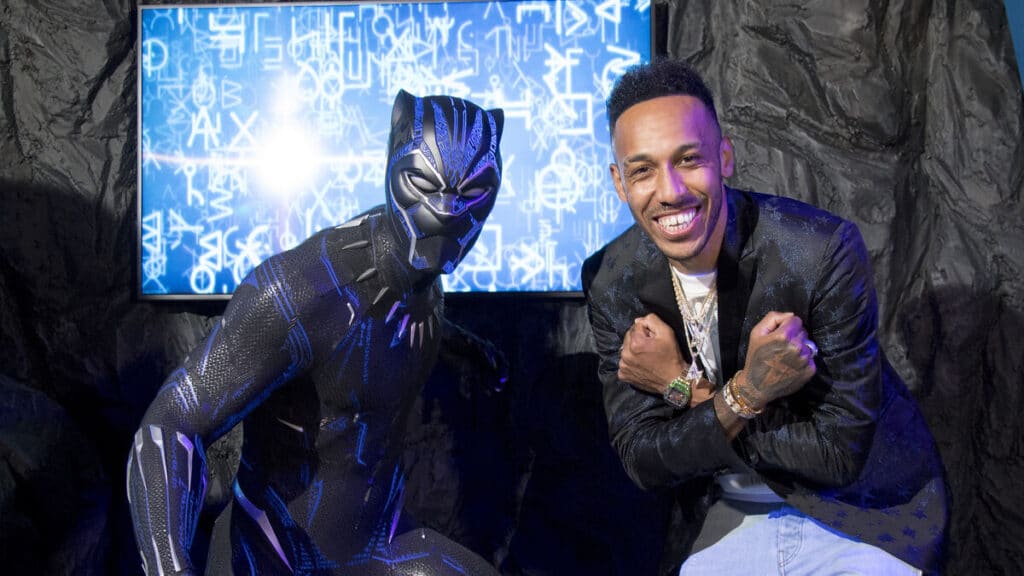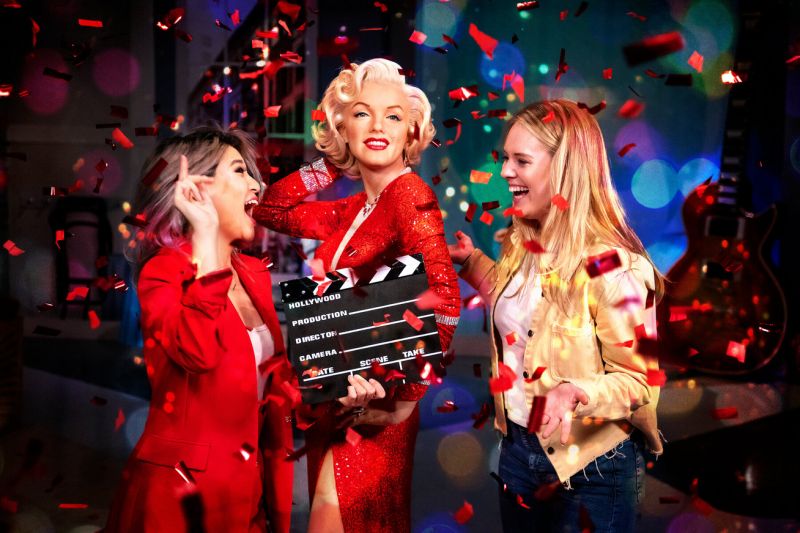The Unbelievably Realistic World of Madame Tussauds
The Madame Tussauds wax museum is one of the most popular tourist attractions in London with branches in more and more major cities. The first overseas branch of Madame Tussauds was opened in Amsterdam in 1970 and there are currently 24 Madame Tussauds worldwide, including seven in the USA, and museums in Beijing, Tokyo, Vienna and Sydney, Australia displaying historical and royal figures, film stars, sports stars, famous murderers and fiction characters such as Shrek and Incredible Hulk.
How it all began
The wax museum was founded by wax sculptor Anna Maria “Marie” Tussaud. She was born Marie Grosholtz in 1761 in Strasbourg, France. Her mother worked as a housekeeper for Dr. Philippe Curtius in Bern, Switzerland, who was a physician and a wax modelling expert. Dr. Curtius taught young Marie the art of wax modelling. Her first sculpture was of Francois Voltaire. She made it at the tender age of 16. Other famous people whom she sculpted included Jean-Jacques Rousseau and Benjamin Franklin. During the French Revolution, she was imprisoned and she made death masks of executed nobles. She inherited the doctor’s sizeable collection of wax models following his death in 1794 and spent the next 33 years travelling around Europe showing them off. By 1835, Marie had settled down in Baker Street, London and opened a museum. One of the main attractions of her museum was the Chamber of Horrors. This section of the show featured victims of the French Revolution and newly created figures of murderers and other criminals. There were also additional well-known figures, such as Lord Nelson and Sir Walter Scott.
Approximately 400 different figures were originally shown in the museum, but fire damage from 1925 and the German bombing from 1941 made the majority of these older models unusable. The casts themselves have survived and the historical waxworks could be remade, and they can now be seen in the museum’s history exhibit. Some sculptures still exist that were created by Marie Tussaud herself. Even Madame Tussaud’s wax figure is on display at the entrance of the museum. She did her own portrait just 8 years before she died at the ripe old age of 89 in her sleep. Today more than 190 lifelike wax figures are exhibited in Madame Tussauds London.
The art of making wax figures
Each figure produced for Madame Tussauds takes about four months to complete and costs roughly $300,000 to do so from start to finish. The measuring process of the model is a difficult task. The figure is created using more than 250 exact measurements and 180 pictures of the subject. If the subject is not available for measuring, the studio artists study hundreds of photographs and watch hours of video to create the figure and get the measurements exactly. It requires more than just one sitting for several individuals. Over the years, Queen Elizabeth has done modelling a number of times.
To start the sculpting process a skeleton is created from metal tube and wire to support the clay used to form the wax figure. Each wax figure requires 150 kg of clay to replicate the celebrity’s head and body. Sculpting the head alone takes up to 6 weeks. The sculptors have the anatomical knowledge to recreate every bone, muscle and tendon accurately. Then a plaster mould is created of the clay head and body and the body is cast out in fibre-glass after that. Wax is heated to 74° Celsius and poured into the mould to cool and harden overnight. The head and the body are created separately. The exact eye colour is chosen from a selection of eyes to match the eye colour of the celebrity. The eyes are constructed from acrylic resin. The artists hand-paint the iris and add fine red silk threads to make every single vein visible in the eyeball. Each strand of hair is inserted individually so a head takes approximately 5 weeks to complete.
There are approximately 100,000 hairs on each head. Knotted rope is used to create the look of veins on the body.
If possible, a tooth impression of the personality is taken and a dentist reproduces the entire set of teeth within 28 hours for the production of the wax figure. Finally, all the pieces are assembled and the wax figure is dressed in an outfit that is appropriate for the personality. It is customary at Madame Tussauds that celebrities provide their own clothing for the wax figures. Before the figure begins its journey to the exhibition, it is approved by the entire team of creators and the model as well. Finally, a professional photo shoot is conducted to ensure the consistently high quality of the figures. They are frequently refreshed and newly styled in the attraction. All wax figures are created 2 per cent larger than the actual person because this is how much the wax is anticipated to melt throughout the entire procedure. Every figure displayed in the museum receives routine hair washing and make-up touch-ups. Before the museum opens, two maintenance crews examine each figure every day.

Madame Tussauds interesting facts
– Sleeping Beauty is the oldest existing figure on display. It’s the work of Curtius from 1765 and part of the waxworks he left to Madame Tussaud when he died. It was modelled after Madame du Barry. She appears asleep and a device in her chest gives the impression as if she were breathing.
– Incredible Hulk is Madame Tussauds’ largest-ever sculpture, standing 4.5 meters tall.
– Tinkerbell, a figurine from Peter Pan, is the smallest Madame Tussauds has ever produced.
– Mother Teresa rejected having a sculpture made of her because she thought her work was more important than her appearance. Just very few people have ever done so before.
– Adolf Hitler’s wax figure was decapitated in Madame Tussauds Berlin location in July 2008 by a 41-year-old German man who slipped past two security guards. The attacker said, “It disturbs me that Hitler should become a tourist attraction.”
-The wax figure of a Bollywood star, Shah Rukh Khan received a marriage proposal. A fervent female admirer presented his figure with a diamond ring.
– Weatherman Al Roker surprised unwary guests by posing in place of his lifelike wax replica for two hours on November 3, 2009, as seen in a piece on NBC’s The Today Show. At first, the visitors were led to assume they were seeing Roker’s wax counterpart.
– In 2012, One Direction also impersonated their sculptures in the London museum, as a prank for the TV series Surprise Surprise.
– The real human hair used on figures – including beards, moustaches and eyebrows – needs regular shampooing and styling. In 1996 the astonished staff found that Hitler’s hair appeared to be growing and it even needed clipping.
– The museum stays current with the news. Madame Tussauds London has decided to take its wax replicas of Prince Harry and Meghan Markle off of the Royal Family exhibit in response to their choice to leave the British Royal Family. The couple had previously stood next to the Duke and Duchess of Cambridge, the Queen, Prince Philip, and the Prince of Wales. They were separated from the family to reflect their “progressive new role within the Royal institution.”
– No famous person ever receives payment to be cast in wax.
Vocabulary
| physician | orvos |
| tender age | fiatal kor |
| to imprison | bebörtönözni |
| executed | kivégzett |
| to inherit | örökölni |
| sizeable | jelentős méretű |
| victim | áldozat |
| cast | öntőforma |
| measuring process | méretezési folyamat |
| to replicate | lemásolni |
| muscle | izom |
| tendon | ín |
| mould | forma |
| fibre-glass | üvegszál |
| acrylic resin | akrilgyanta |
| silk thread | selyemfonal |
| vein | véna |
| rope | kötél |
| tooth impression | foglenyomat |
| customary | megszokott, szokásos |
| to melt | olvadni |
| to reject | visszautasítani |
| to decapitate | lefejezni |
| marriage proposal | házassági ajánlat |
| fervent | heves |
| admirer | imádó |
| unwary | gyanútlan |
| to impersonate | megszemélyesíteni, bőrébe bújni |
| prank | csíny(tevés) |
| clipping | hajvágás |






